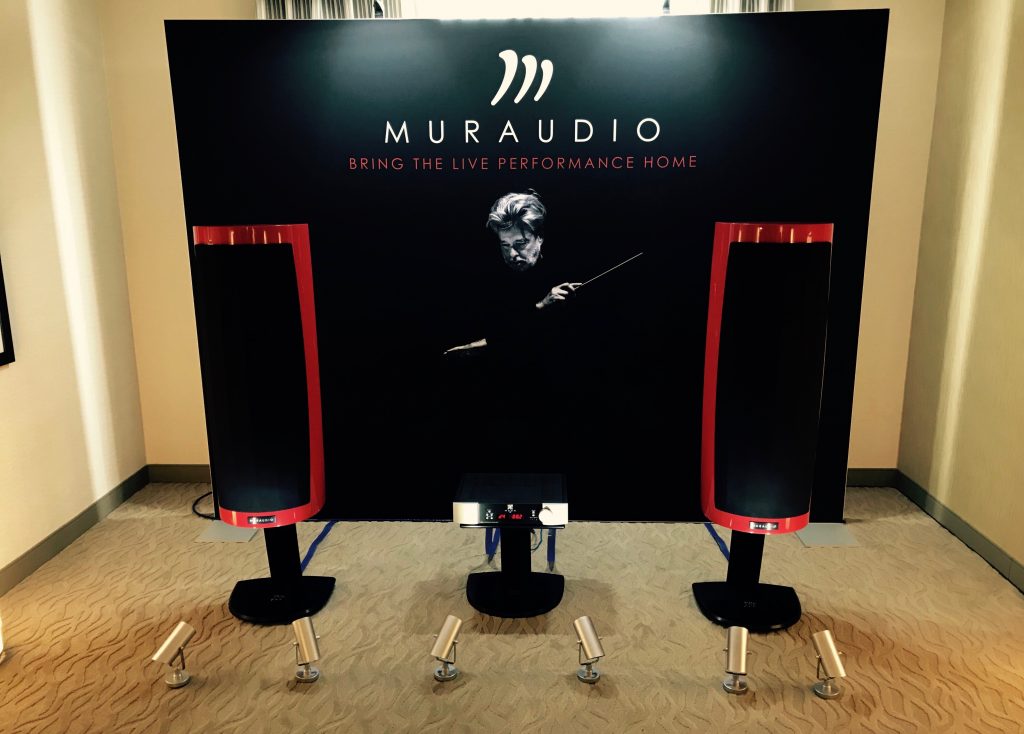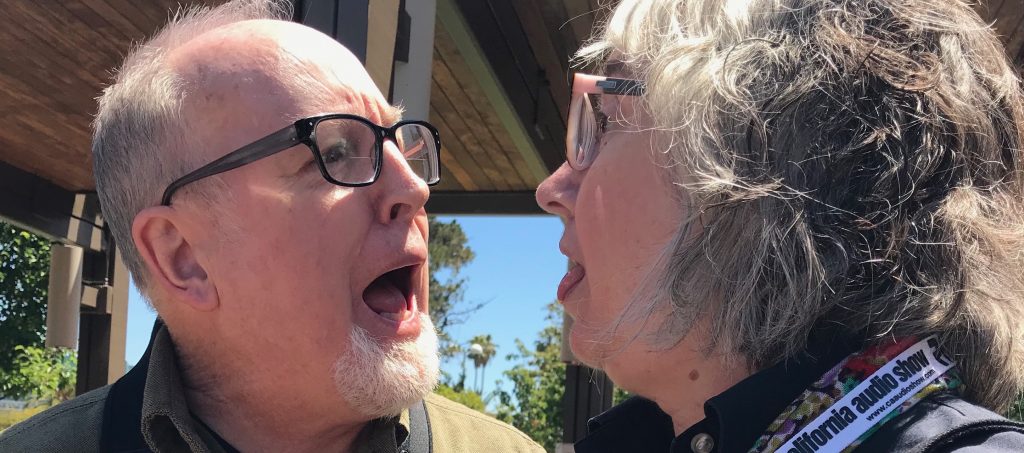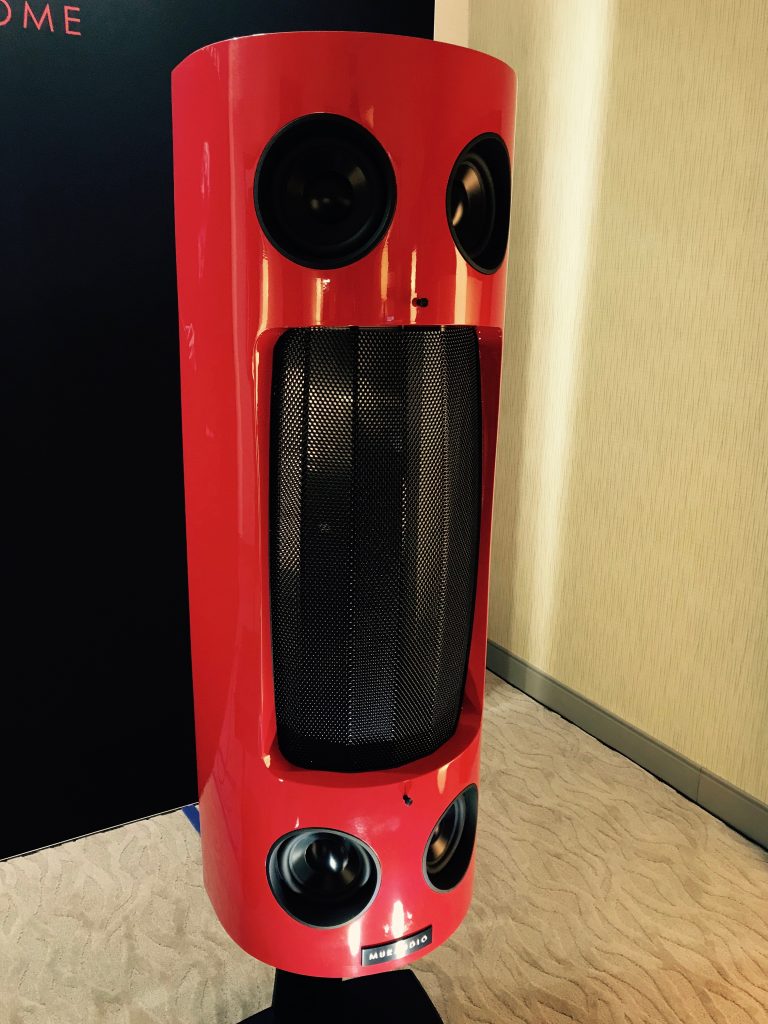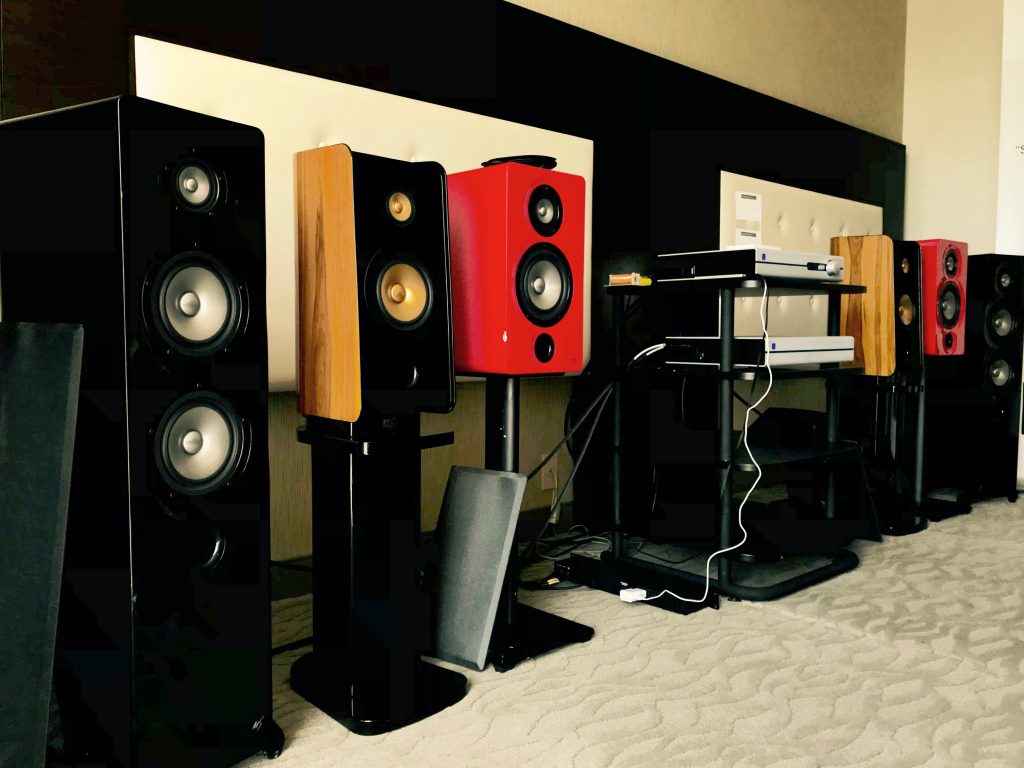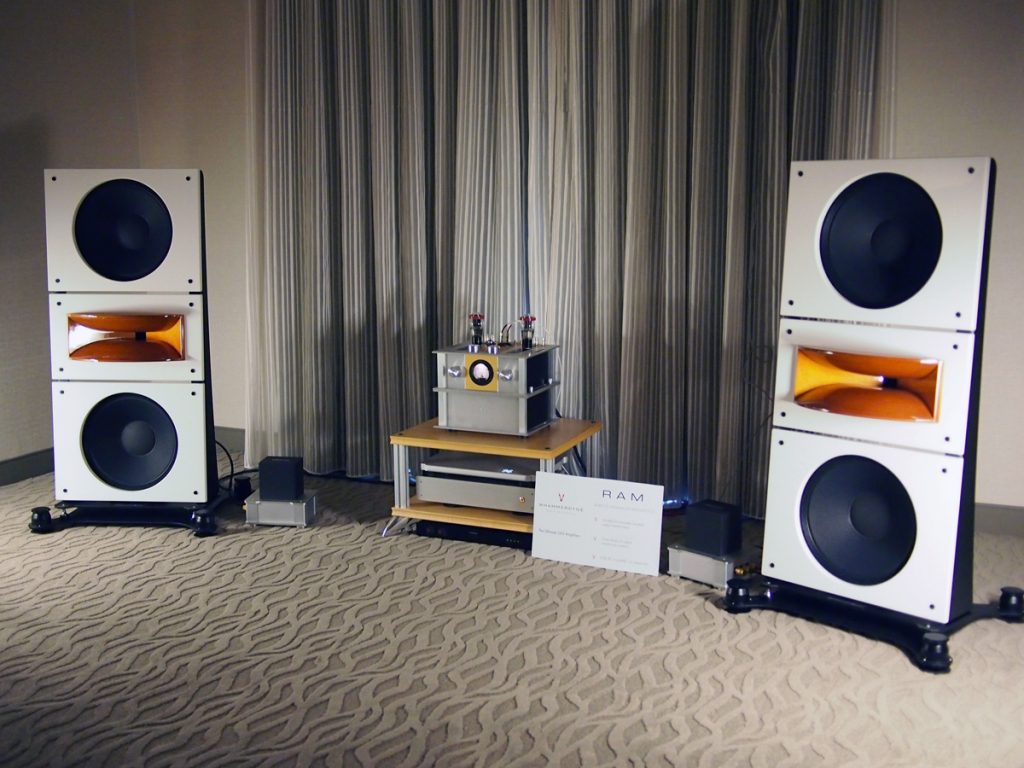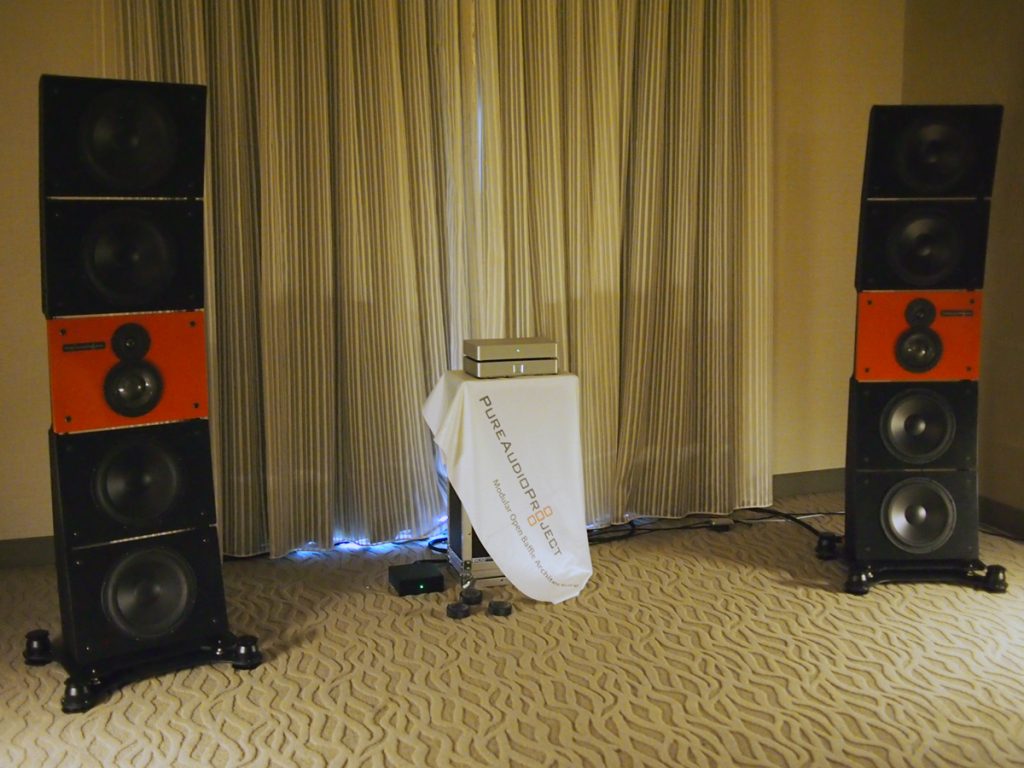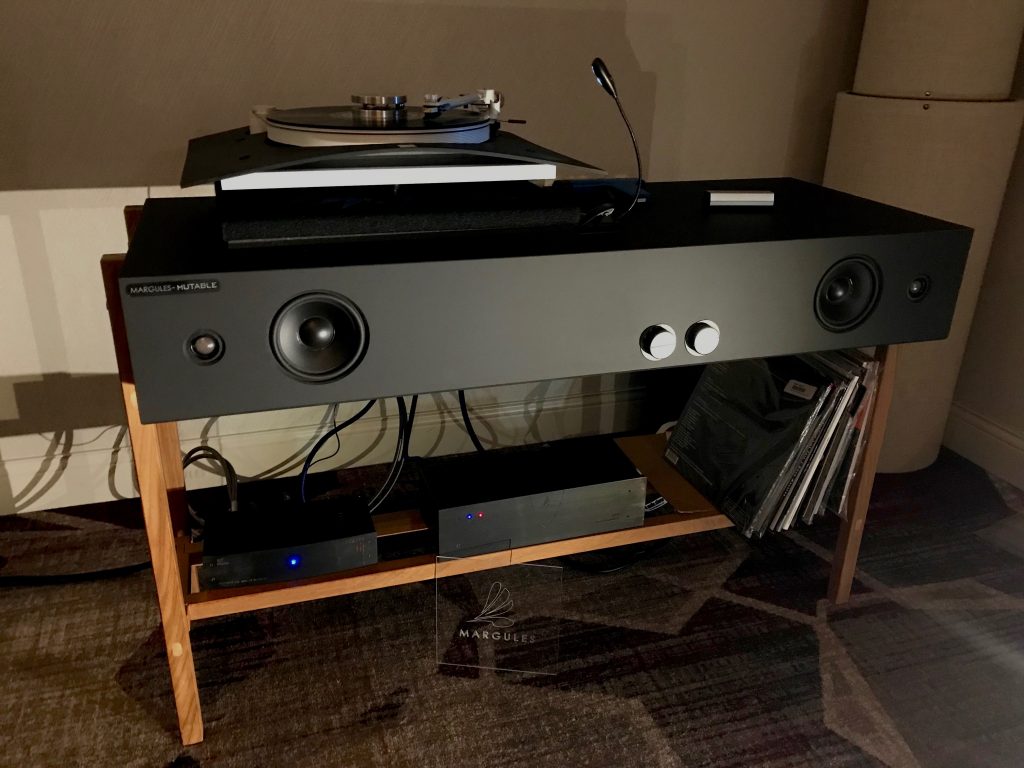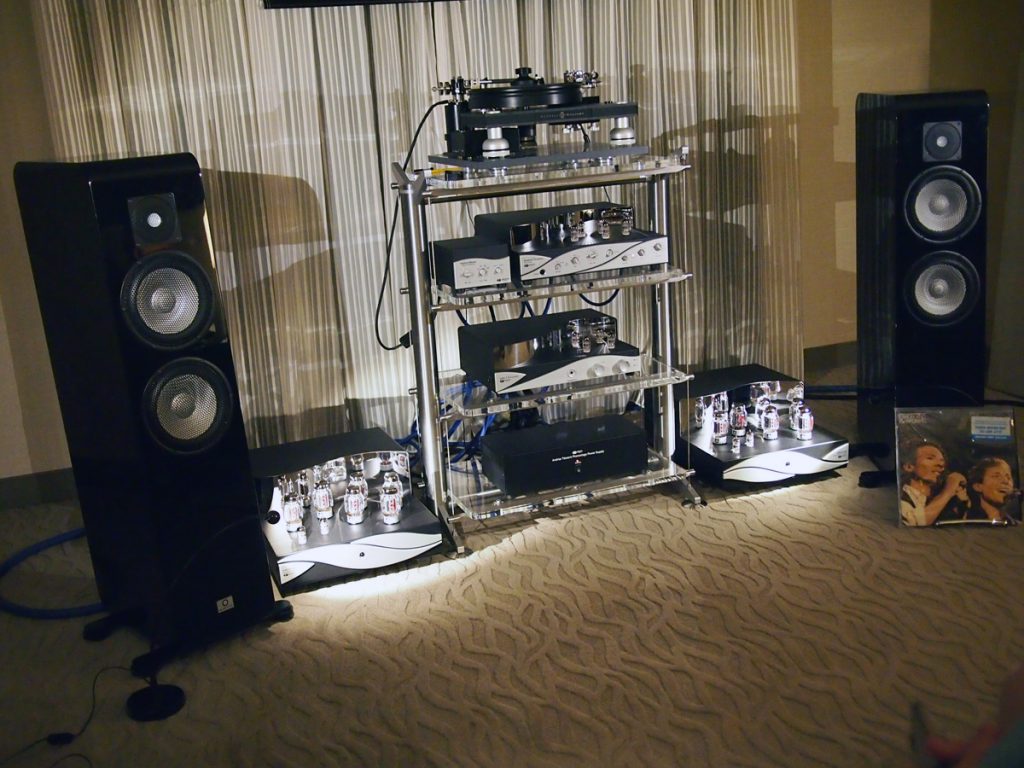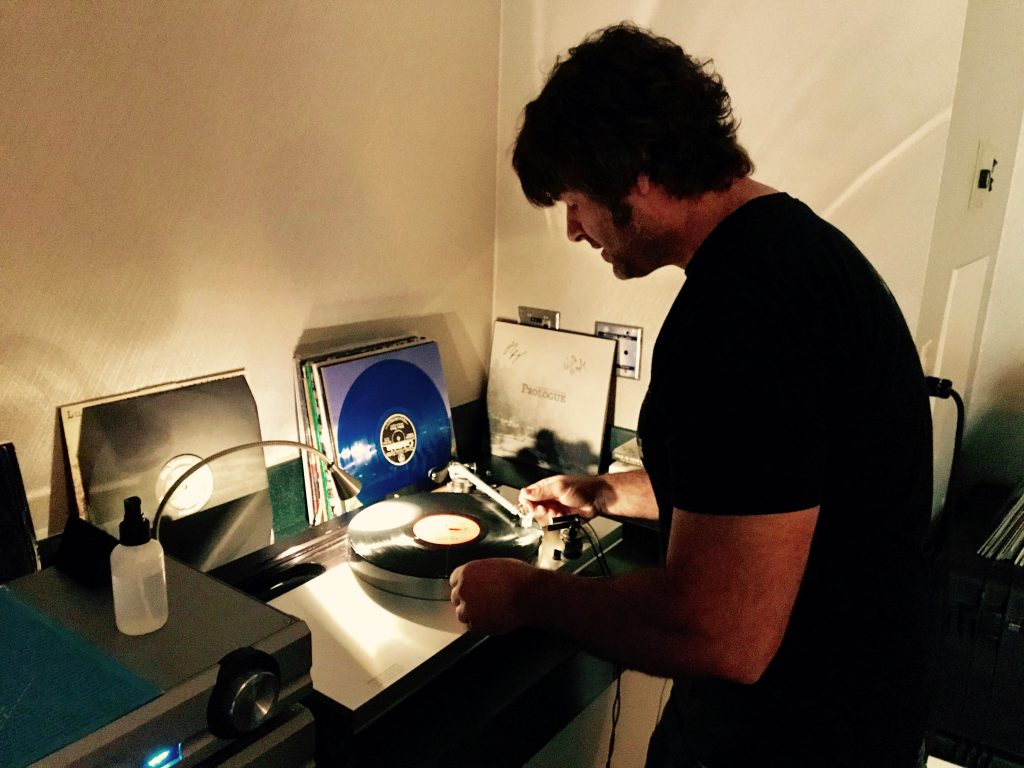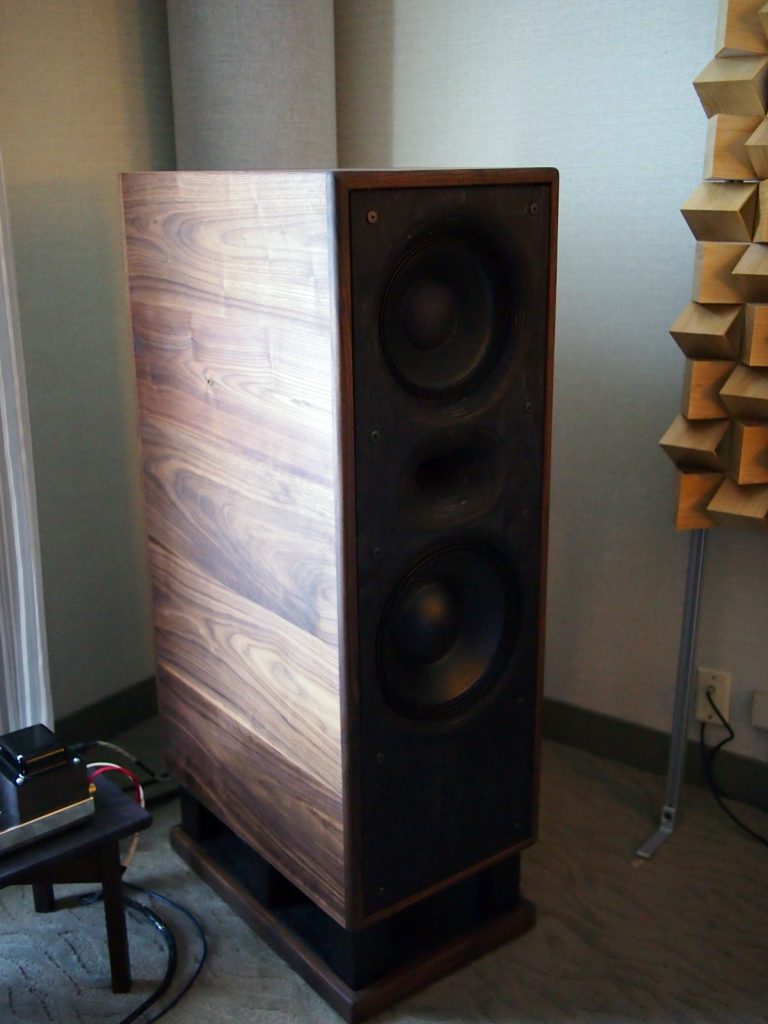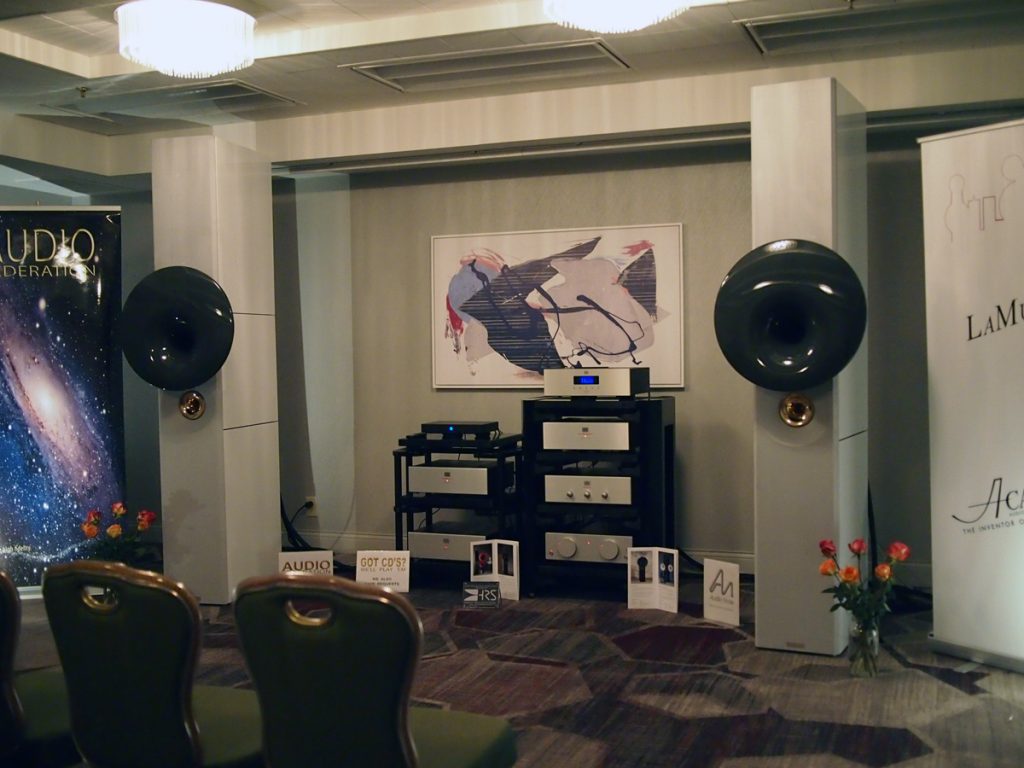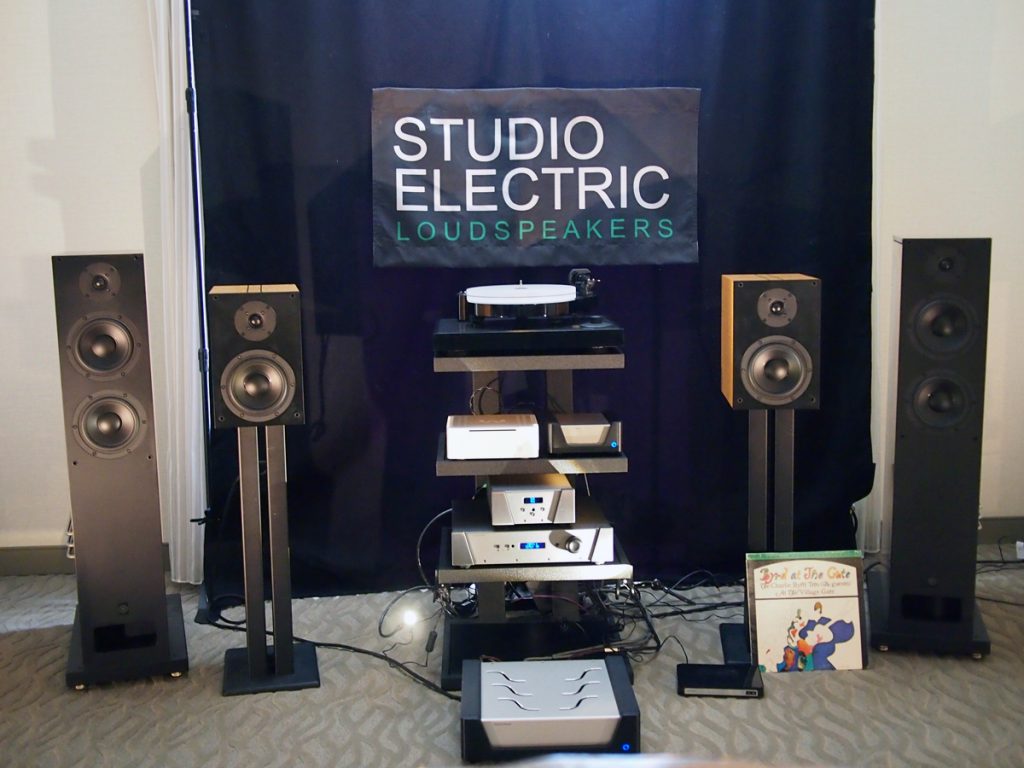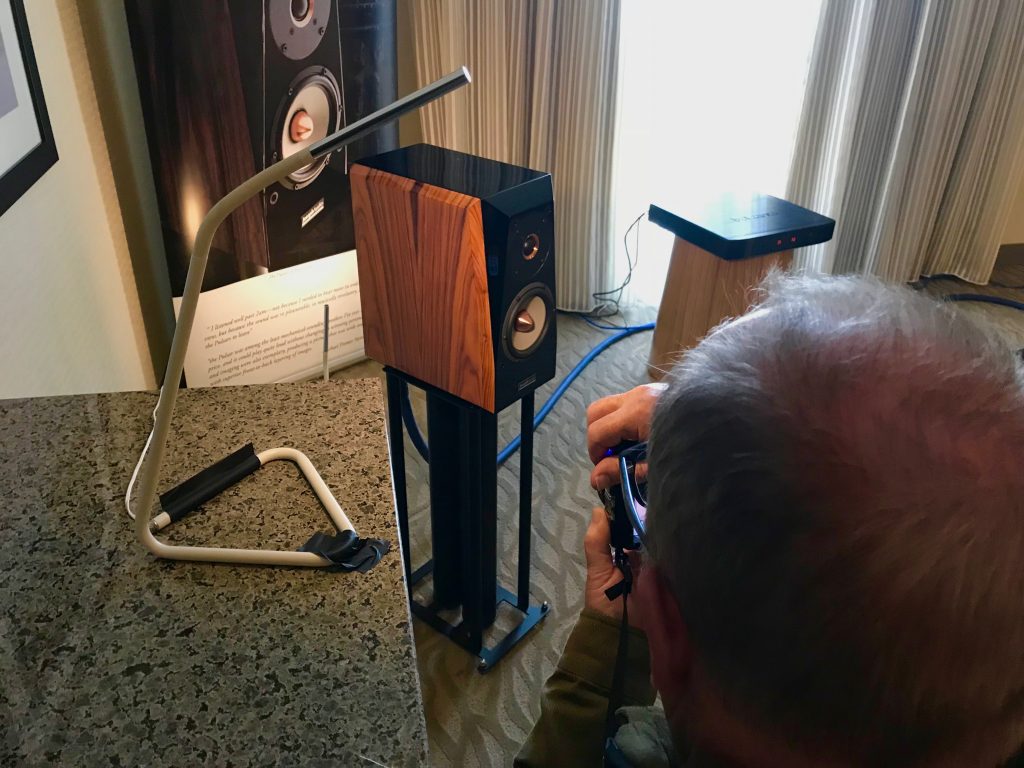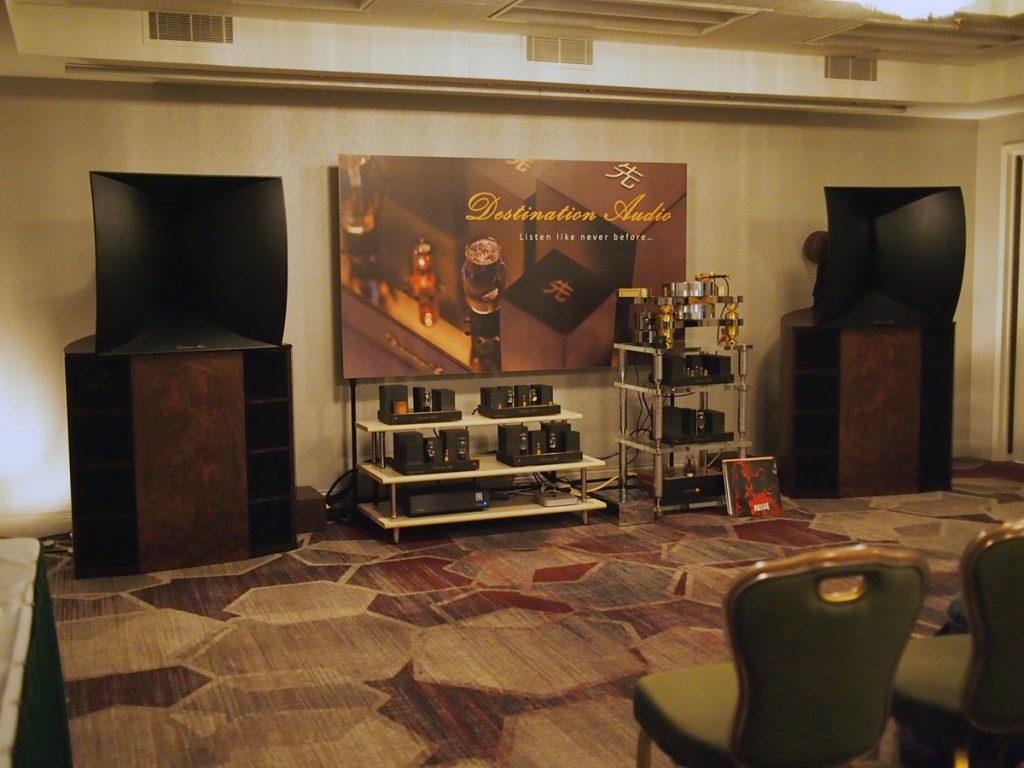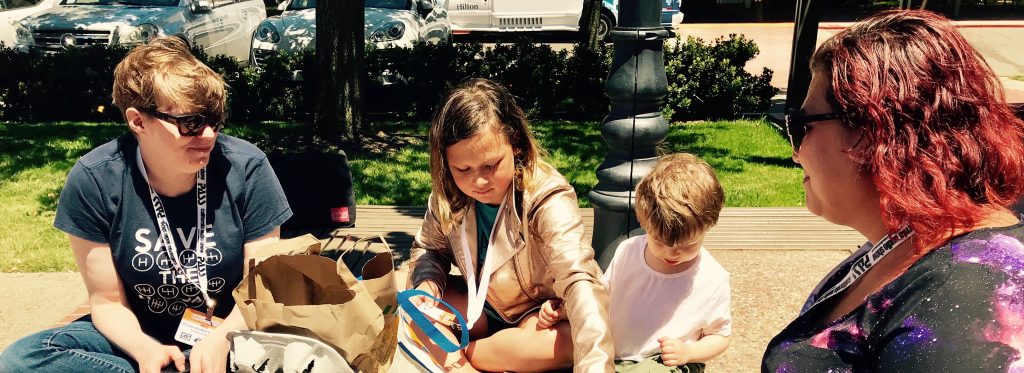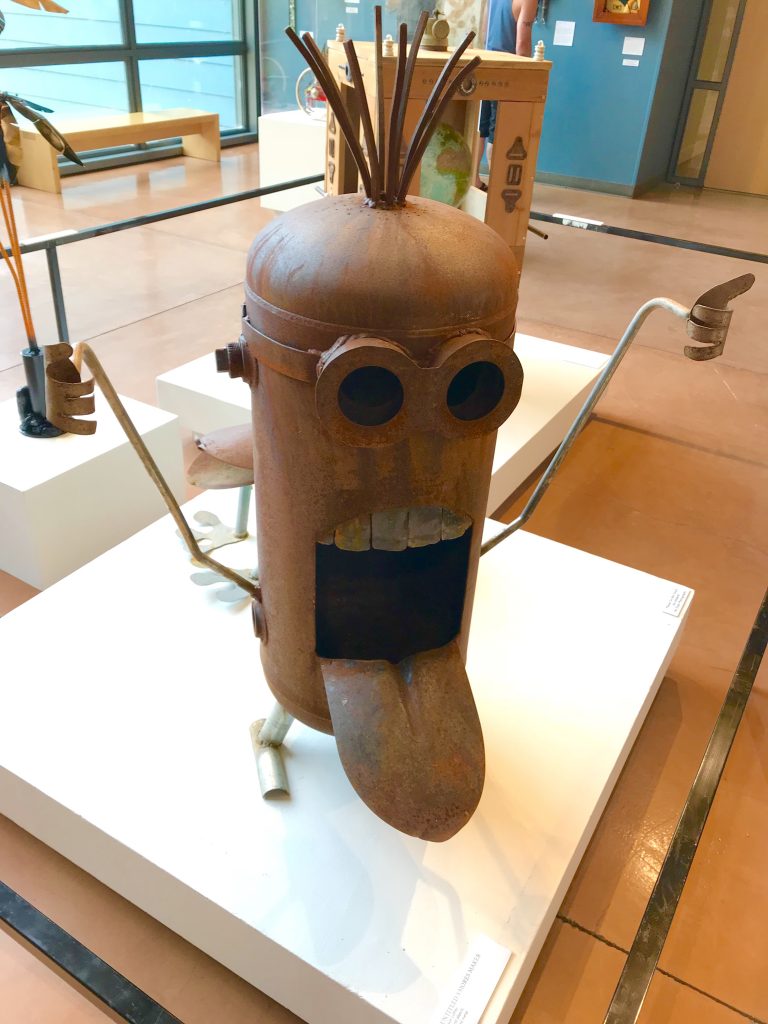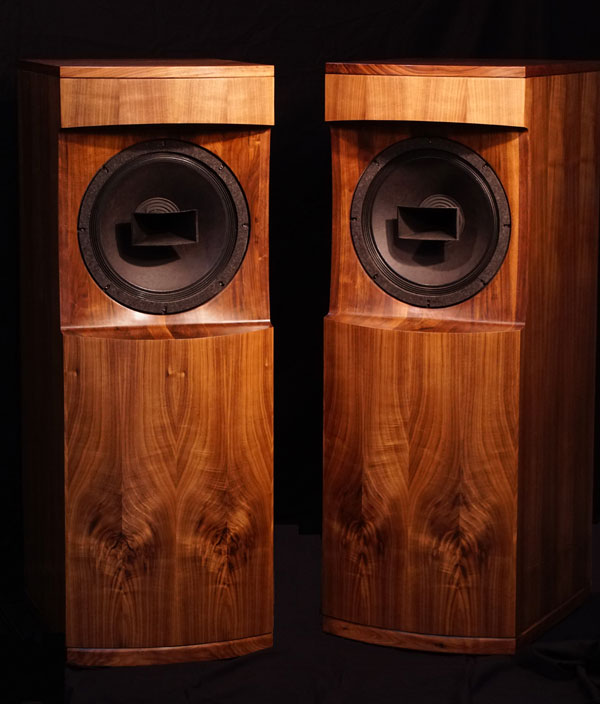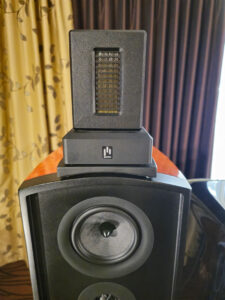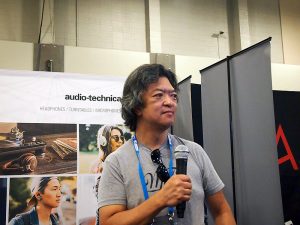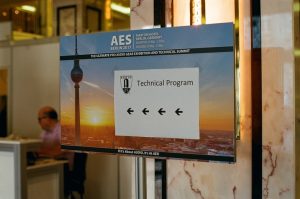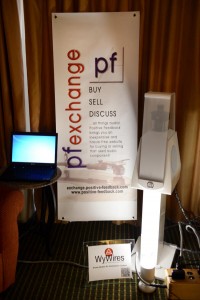Come a little closer. I want to tell you a secret. Are you ready?
I don't go to stereo shows to listen to stereos.
It's true! Maybe once, in the dim mists of my retreating youth, I went to these things hoping to listen to stereos. Now, though? I don't want to listen to stereos. "Listening to stereos" is down near the bottom of my list of priorities. If I'm shambling from room to room just to listen to stereos, something has gone horribly, horribly wrong with my day.
Do you want to know why I go to stereo shows?
I go to see friends, I go to drink beer, and I go with the hope in my heart that I'll have my mind blown and my soul recharged by the most utterly ridiculous, beautifully functional industrial art this side of a private moon rocket. I want to experience something so beautiful that I forget where I am.
Listening to stereos? That's just the fallback plan. I want to to get together with the weirdest people on earth, have a drink, and find myself on another planet.
Dave and Carol Clark
Which is why, despite all common sense, my wife and I loaded a cranky three year old into a car to drive six hundred miles to Constantine Soo's eighth California Audio Show.
CAS gets a bad rap in the industry. It's small. It's sometimes sparsely attended. It's not a destination. Twenty or thirty exhibits in a sleepy airport hotel doesn't, on paper, seem to compete with the hundreds of exhibits and urgent scrum of AXPONA, or the mass appeal of Munich High End, or the sheer volume and variety of the Hong Kong Audio Show, but, in the three years I've attended CAS, Constantine has always managed to pull off the neatest trick in the industry. He's curated a show that gives you a taste of everything.
Whether your jazz is electrostats or horns, whether you're into soundstage demon mini-monitors or hernia-just-thinking-about it floor standers, whether you're into tubes or solid state, black box functionality or exposed circuits, tape, vinyl, digital, whatever, CAS has an exhibit for you. While the halls of the big shows can sometimes feel a little repetitive, with most rooms blurring into the same-same square dance groove of same-same style, CAS offers a CliffsNotes summary of the industry and the art. If you're lucky, you get your brain dipped in magic two or three times over a long weekend elbowing your way into a couple hundred rooms at a big show. In my experience, though, I get my brain dipped about as much at CAS without the grueling death march through packed hallways. If you want to know what's out there in Audio Land without being overwhelmed, without working too hard, and with more time to let some engineering absurdity scrub your grey matter, CAS has a good record of being the place to go.
2018 didn't let me down. Out of twenty odd rooms, at least five left me surprised and excited far beyond any reasonable expectation. Even more rooms filled most of my unreasonable expectations. And the exhibits that didn't? I'd forgotten them by the time I got to the bar.
So let's get into it.
The Good
Muraudio
Muraudio showed their new SP1 hybrid (just under $15,000) driven by a Simaudio 340iDPSX integrated ($5800) and its onboard DAC. Either I'm getting old and deaf, or Muraudio has done a close to miraculous job of integrating the four dynamic woofers per channel with their curved electrostatic panel. I didn't even notice that they were hybrids until the thundering bass rolled in on the Mekons' "Diamonds." When the stats showed no signs of breaking up, I thought I could almost hear the woofers.
Then the grills came off. The woofers weren't quite where I thought they were.
I walked out of this room with the kind of lust in my heart that I've previously reserved for big SoundLabs. I need—NEED—to hear more.
Markaudio-SOTA
I'm a longtime fan of Mark Fenlon's Markaudio drivers. It's always a joy to hear what that kind of hyper-attentive engineering can bring to the table. In this case, the MarkAudio-SOTA $3500 Cesti T towers (darn near the cheapest speakers at the show) did an impressive job of showcasing the bite of the upstream Stellar electronics from PS Audio.
Whammerdyne & PureAudioProject
Photo by Dave Clark
A (sadly discontinued) MSB Analog DAC danced with Whammerdyne's new model DAA3+ RAM amplifier ($6900) and the Trio 15 Horn1 speakers from PureAudioProject ($8000) to produce (within the limits of a couple of watts) some of the most tactile and engaging music at the show. Madeleine Peyroux's cover of "Desperados Under the Eaves" showed off every bit of the recording's quality.
Unfortunately, no stereo can make Madeleine Peyroux into Warren Zevon. Not even this one.
PureAudioProject
Photo by Dave Clark
In their second room, PureAudioProject was playing their new-ish Quintet10 Open Baffle. Instead of widebanders, AMTs, or horns, this speaker has a more familiar dome tweeter and cone midrange. Friday's all-Exogal system ($7000) sounded too mechanical for my tastes, but Saturday's substitution of a Pass amp turned the system into a music maker with surprisingly authoritative bass.
Margules Group
Sure, there was a big, expensive system with the crystalline realism and scrumptious musicality that I expect to hear from Margules, but the killer was the five grand MuTable stereo console. It's gorgeous. It rocked hard enough to fill the airplane hangar of a room. It'll fit in any house. You can put a turntable on top. You can plug in a source. You can dance. The folks in the room were Bluetoothing up a party.
More of this, please. A lot more of this, please.
Zesto
Photo by Dave Clark
I'll make you a deal. I'll let you know when Zesto's George and Carolyn Counnas aren't making music to die for. Until then, just make up some obscene superlatives. Their demo rooms are that good. I would happily live in any their rooms. This was no exception.
Zu & Pass Labs
The three takeaways from this room are:
- Sean Casey spins great music.
- Pass Labs makes delicious amps.
- The new Druid Mk VI sounds like ten grand worth of speaker.
Zu has seriously upped their game. Pass is making better electronics than ever. Any questions?
Bernhagen-Porter
Photo by Dave Clark
Some rooms just have too many names on the door. The Sierra Nevada Audio Society. Quicksilver Audio. Syncopation. Bernhagen-Porter. A cast of millions. Ten thousand elephants. AND MORE. Then again, some rooms make up for it by being nearly perfect.
Either a Heed digital front end or a gilded Bricasti monstrosity were partners for the voice of the too-rarely-heard Quicksilver electronics. The star, though, was the debut offering from Bernhagen-Porter. The Model 10/12 Loudspeakers, featuring horn loaded treble, a 10" midrange driver, and a powered 12" driver for the bass, seemed to play everything significantly better than merely well. They're clearly a labor of love (an obsessively detailed kind of love, judging by the results). It was, to my thinking, among the best executed systems of the weekend—with a voice that grabbed on to every one of my weaknesses and shook. Given that there seemed to be twenty people shoehorned into this tiny room at any given time, I can't be the only person who thought that way.
The Bernhagen-Porter Model 10/12 is ambitiously priced at a somewhat delusional $50,000. Who knows? Maybe they're worth it.
Audio Federation
Photo by Dave Clark
J.P. Morgan is reputed to have said, "if you have to ask the price, you can't afford it." Audio Federation only listed one price on their equipment list, $105,500 for Acapella's La Musika integrated amplifier. I... uhh... I don't think that I can afford the rest of the gear, either.
That doesn't surprise me.
Acapella's enormous Campanille 2 speakers with big horns and plasma tweeters were the stars. I'd have to ask the price. Audio Note UK Electronics fronted the system, with the you-definitely-can't-afford it Fifth Element dac and heart-attack-on-a-stick CDT-Five CD transport at the head of the chain. An Audio Note M9 preamplifier rounded out the British offerings. If you want to ask the price, you're on your own.
When faced with that mountain of primo gear, the only choice you have is to play Southside Johnny at concert volume, right? Why else would you have a stereo that costs nearly a million dollars? So that's what we did.
And now I want to ask the price. I probably can't afford it.
Studio Electric & Wyred 4 Sound
Photo by Dave Clark
I will never understand why Harbeth remains a sacred audio name while Studio Electric carries on in relative obscurity. Friday saw the $11,500 Studio Electric FSX floorstanders killing it, while Saturday had the $2500 Studio Electric M4 monitors making a good price/performance argument for making Dave MacPherson a saint right now. I've simply never heard a piano reproduced as convincingly from a set of cheap(ish) shoeboxes. I've certainly never heard it happen in a hotel room. Studio Electric & Wyred 4 Sound made that happen. And that's magic.
The Best
Joseph Audio
Photo of Dave Clark
If you're ever destructively stupid enough to bring a three year old to an audio show, you, too, might have the pleasure of learning just how loud a three-foot-tall antichrist can be when she screams, with tears rolling down her face, "this music is bad! I want Moana!" in every room.
She wasn't wrong. The music was generally awful even for audiophile music at a stereo show. Surprisingly, though, it turns out that tyke tantrums don't really improve that experience. Who knew?
If you, too, find yourself hauling thirty odd pounds of tears and kicking through the hallways of an airport hotel, allow me advise you to go see Jeff Joseph of Joseph Audio. His demo rooms always sound superb, but, more importantly, Jeff has both a Qobuz account and a complete lack of fear.
Within seconds, the drums from "We Know the Way," our distressed daughter's favorite Lin-Manuel Miranda track, were pounding through a Bel Canto Black EX integrated ($15,000), a loom of Cardas Clear cabling, and Jeff Joseph's own Pulsar stand mounts ($7700) with more punch and bite than you'd expect out of anything that tiny. The tears stopped. Our friends, none of them audiophiles, got up and danced with the kids. Jeff followed that up with the only appropriate song, "No!" by They Might Be Giants. The dancing continued out of spite until the track switched to Steely Dan, at which point all of the middle-aged dudes in the room offered their thanks while everyone else scurried out at speed.
From an audiophile perspective, it's fair to say that this system more than did its job. From a human perspective, though, Jeff Joseph's demo stereo did everything I want a stereo to do—it offered an experience that could lift a room full of people out of whatever state of mind they were in and drop them into a better one. A weirder one, yes, but a better one.
For what it's worth, my daughter has spent the last two weeks asking to listen to that song in "Jeff's good room" again. She says Jeff is nice and his stereo sounds good. It was her favorite room.
It was mine, too.
The Glorious Failure
Destination Audio
Photo by Dave Clark
Rule 34 states that if something exists, there's porn of it. Destination Audio is the most concrete example of Rule 34 in action that you're likely to find outside of the more fetish-y corners of comic book fandom. While a Lampizator DAC and a Mac Mini made up the digital front end, forty thousand bucks worth of Triangle Art's shiniest analog bling fed the ninety-odd thousand dollars worth of Destination Audio's own exotic, flea-watt amplification chain that bi-amped Destination Audio's $95,000 horns, which I can't bring myself to call anything other than "The Porn Horns."
The Porn Horns had everything a picture groping audiophile could want. They had most beautiful, Jubilee-esque bass bins. On top of those sat the biggest, baddest, most absolute, mid-range Butt Cheek horns you've ever seen. Hand-crafted, lacquer finished, hand rubbed butt cheeks. Tucked into the top vent of each bass bin, hidden from sight, was a horn tweeter firing out of another set of baby butt cheeks. The workmanship was superb. The artistry was beyond ambitious. If this was porn, it was porn with the highest production values on record. The sound was supple, lithe, forceful, and, of course, it was as dynamic as a tidal wave. It was possibly the best executed classic horn system I've ever heard. It was certainly the most beautiful.
The problem with porn though, is that it doesn't matter how good the production values are. In the end, it's never really as satisfying as you'd hoped it would be. Similarly, classic horn systems are loved for the things they did right, but the things they do wrong are legendary deal breakers.
The Porn Horn system sounded the way you'd expect a classic horn system to sound. The lower registers were realistic, natural, and just that eensy-bit colored with a perfectly romantic woody tone. There were obvious time issues between the drivers. The Butt Cheeks shaded everything with the unique Butt Cheek voice that only the luckiest people can't hear. And the tweeters? I plain forgot they were there until they shouted at me. This was the pinnacle of ambition. It was a damn fine system except in the ways that it wasn't. Nothing about this system was a compromise. Its successes were huge. Its failures were epic. I love it to death. I don't want it anywhere near my house.
Everybody should hear this system before they die. It's an education into itself. I hate it without compassion. I want to hear it again right now.
Destination Audio doesn't make stereos. They make art.
[Correction: Art Smuck of Destination Audio caught some boneheaded mistakes on my part. The speakers were not biamped, so the quoted price for the amplification chain was too heavy by the $29,500 price of a pair of Destination Audio 50 Tube Monoblocks. Call it "sixtyish thousand dollars worth" instead of "ninety-odd thousand worth" of amplification, and keep in mind that those tidal-wave dynamics came out of all of 1.8 watts per channel.]
This is the end.
I would like to take this time to draw from limited experience at a small, regional show to diagnose the health of the industry and the ills of the world, but experience has taught me that I should never do either of those things while sober.
And, besides, I had too damn much fun.
We'll be at next year's California Audio Show, too.
Smores Maker on display at the Turtle Bay Exploration Park Museum.
All photos by Malachi Kenney unless otherwise noted




